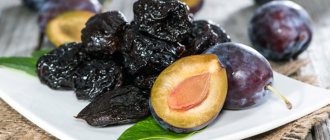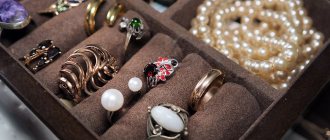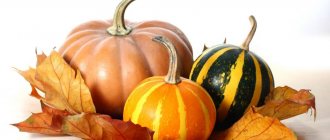Storing bloodworms is an issue that has not been clearly resolved on the Internet. Various resources offer dozens of methods, without particularly understanding their effectiveness and subtleties. These red grubs are the main bait used by anglers in the winter. In this article we will close this issue. Let's consider really working methods of keeping larvae alive at home, as well as the nuances and features of this process, which, as in all fishing, cannot be done without.
Long-term storage
To store live bloodworms without allowing the larvae to die, you need to understand the environmental conditions in which the bait must exist. In almost all fishing stores you can buy a dose of these worms for 1-2 fishing trips and store this small amount in the refrigerator for a couple of days with almost no additional manipulations (even in this case there are features that we will discuss below). Amateur fishermen use these larvae more often when fishing in winter, so we will talk about their safety mainly in the cold season.
For fishermen who often go a lot for winter fishing, a reserve supply of large larvae for bait, as well as food bloodworms (liman) in a living state, may be necessary. It is the movement of live bloodworms on the bottom that most strongly attracts fish, which is why feeding with these larvae is so effective. The bream senses the swarming larvae from several meters along the side line.
Keeping bloodworms alive for a long time will be useful when using this bait for sale, as well as for those anglers who plan to wash the larvae themselves and then use them all winter.
Storage conditions
How to store bloodworms for fishing correctly? Storage conditions are determined by the biological characteristics of this mosquito larva. She hatches from an egg in the warm season, feeds and grows. Then it survives the winter in the bottom sediments of the reservoir, and with the onset of a warm period it pupates and turns into an adult mosquito (imago).
Thus, the bloodworm lives in the larval state for a little less than six months. In winter, the temperature of the larvae’s habitat is from 0 to +8 degrees. And this is one of the important storage conditions. This aspect determines at what temperature the bloodworms should be stored at home. Therefore, storing bloodworms in the refrigerator is important for ordinary fishermen. Just about 4 degrees Celsius.
For long-term storage, it is very important not to expose the larvae to large amplitudes of temperature changes and to hold them for a long time at higher thermometer readings. That is why after fishing, unused bait is thrown away. Such bloodworms have already undergone temperature fluctuations and will therefore die within a day or two. Under no circumstances should you return it from a blood bottle you took with you on a fishing trip to the general storage, otherwise the entire volume will be spoiled.
The mosquito larva lives in water, so keeping it in a humid environment is the second most important condition. But there is one peculiarity here. All storage methods can be divided into two large groups:
- Dry (in fact, it would be more correct to say wet).
- In water (conditions similar to the natural habitat are artificially created).
Bloodworms stored “dry” cannot be wetted. But many anglers make this mistake. They wet the larvae, which then quickly disappear because of this. Also, excess moisture during long-term “dry” storage contributes to the appearance of mold, which kills the larvae.
What do bloodworms eat and how to feed them at home?
An important factor is the nutrition of the larvae. In principle, if the conditions of the reservoir from which it was obtained are normal, then the larva has a supply of nutrients in its body that supports its vital functions.
- During the cold season, she eats little, only as a last resort to maintain strength. Therefore, there is no need to specially feed it - after all, during storage it is the winter conditions of existence of this benthic organism that are copied. Therefore, bloodworms do not feed at home, as they hibernate (roughly speaking). But sometimes you can get a weakened larva, of mediocre quality, which has spent its nutrients.
- Signs of this may include pale color and lethargy. Such bloodworms can be fed (both during long-term storage and short-term storage to improve properties before fishing). If the larvae are good, bright red in color and move, then such troubles are not required.
- In the natural environment, mosquito larvae feed on plant and animal debris, as well as various microorganisms in bottom sludge. What to feed bloodworms at home in winter? The simplest and best option is an aqueous solution of a small amount of yeast and sugar. This mixture contains both proteins and carbohydrates.
- When kept dry, a rag or newspaper in which the bloodworms are located is blotted with it, and if they are stored in water, then a little of this feeding should be poured directly into the container. After feeding in the first case, the bloodworms need to be washed in clean water, dried and continued storage. In the second case, the water simply changes.
Which bloodworm is suitable for long-term storage
For the success of this event, it is necessary not only to properly store the bloodworms at home, but also to use the larvae themselves of normal quality. The bait is washed in two ways.
On an industrial scale, the larvae are removed and washed using the pipe method using a special pump with a sieve. In this case, many larvae are injured, they will not be stored for a long time and will quickly die. Such bloodworms are supplied in large quantities to large fishing stores and aquarists as fish food. It can be distinguished by a large number of dead individuals; sluggish larvae will have a pale color.
For long-term storage, bloodworms obtained only by hand, using the bag method, are suitable. Therefore, you need to either wash it yourself. Or buy from a seller who obviously sells this hand-washed bait.
In any case, it is better to wash it yourself, since it is not known what temperature fluctuations the store-bought bloodworms fell into. If it was frozen or overheated at least once after being taken out of the reservoir, then it will no longer be stored alive for a long time.
Bag method
Pipe pump
Wide mouth jar
This effective and convenient method requires any container with a wide neck, that is, a jar, the upper part of which is not narrower than its bottom. For these purposes, you can take a plastic bottle and cut off its top part. The bottom of the container is covered with river sand and filled with water. Then the live bloodworms are washed and poured into water. The larvae will soon bury themselves in the sand - that’s how it should be. After this, gauze is attached to the neck, through which air will flow. When bloodworms are needed, they are collected from the bottom. It is convenient to collect it with a sieve that allows sand to pass through but leaves behind the larvae.
Breakdown
Bloodworm breaker is a dry, finely dispersed substance that, when mixed with a mass of bait, separates each larva from the other. This event somewhat increases the lifespan of the larvae if you store the bloodworms at home. Starch or a special store-bought mixture is used as a breakdown for bloodworms.
Another factor for proper long-term storage is the absence of crowding. Each larva must have access to oxygen in order to breathe. Inside the stuck together lumps, the bloodworm quickly dies, spreading rot around itself and killing even more individuals. This method is very good for preserving bloodworms for fishing in winter, which usually lie in a fairly dense layer of newspaper.
Tea brewing
This method involves placing the tea leaves at the bottom of a glass container, which must have a lid. For ventilation, small holes are made in this lid, and the bloodworms are placed at the bottom of the container, evenly mixing with the tea leaves. Next, as always, it is placed in a cool place. Once a day, the container with the larvae and tea leaves should be shaken.
This method cannot be called ideal, since due to the contact of the larvae with air, their life expectancy will not increase much . But the good thing about using tea leaves is that it requires very little preparation. In certain conditions this may be useful. For example, this method of preserving bloodworms can be used during a long hike.
Tea leaves can be replaced with white swamp moss. Before mixing it with the worms, you need to break it down into small pieces. Otherwise, the requirements are the same as in the case of welding.
How to save bloodworms
Storing bloodworms at home comes down to ensuring certain requirements for the life of the larvae, under which they safely wait out the winter. In addition to the necessary conditions mentioned above, there is one more point. An increase in temperature and excess “wetness” serves as an impetus for the development of pathogenic microflora, which kills the larvae.
As a preventive measure, according to reviews from fishermen, the bactericidal agent Polyphepan can be effectively used. It does not poison bloodworms, has no effect on fish (based on plant components), and destroys harmful bacteria. This product is added to the water when the larvae are contained in it; during dry storage, the fabric in which the bloodworms are wrapped is soaked in the drug solution. There are many positive reviews about the use of polyphepane on fishing forums. The drug is sold in pharmacies, the price is about 100 rubles.
Polyphepan
From all of the above, let us summarize what conditions must be met to keep the bloodworm alive:
- Constant temperature 0-10 degrees without changes.
- The larvae were collected by hand and were never cold, overheated or overdried on the way to the fisherman.
- With the dry storage method, the bloodworms should be moistened, but not wet.
- When kept in water, the liquid must be changed frequently.
- If necessary, the larvae can be fed with yeast and sugar.
- The use of polyphepan gives good results.
- The mass should be loose; tightness kills the larvae. Stirring with starch or store-bought ingredients improves shelf life.
- It is strictly forbidden to return larvae that have been fishing in a bloodworm back for storage - everything will spoil.
Breaking down with breadcrumbs before fishing
Large container with silt or sand
Bloodworms can be stored all winter in a large container filled with silt or sand, filled with water. But this is impossible in a city apartment for obvious reasons. It is important to ensure that such an artificial reservoir does not overheat during a thaw and does not freeze to the bottom in severe frost. Applicable for owners of private plots where all this can be placed.
Toilet cistern
You can store bloodworms for several months in a nylon stocking lowered into a cistern (if your wife doesn’t mind). An important condition is that the toilet must be functional so that the water in the barrel is constantly replaced. You also can’t tamp too much, otherwise the bloodworm will die from the crowded conditions. From time to time it is necessary to check the stocking and remove dead individuals manually or pass them through a special blood-worm cassette (more on this below).
Can be stored in a container
Cotton rag
The standard old method, most often used by anglers. This is the “dry” method. As already mentioned, the larvae must be dried (but not overdried!). A good substance - the bloodworm is bright scarlet, shiny, and actively moving. There is no garbage, mold, rot or dead animals among it.
- All this is placed on a cotton rag in a loose, thin layer and wrapped in an envelope. The envelope is moistened with water from a spray bottle (the rag should be slightly damp), after which it must be placed in the refrigerator.
- Once every two or three days you need to check the menagerie and remove dead bloodworms. If something went wrong, the bait began to turn black (die) en masse - everything is washed with clean cold water in a sieve or cassette, dried and placed in a new rag, moistened with a polyphepane solution.
- Previously, when there were no refrigerators, this workpiece was placed on straw, under which a piece of ice was placed. In this way, with some skill and periodic washing, bloodworms can be stored for weeks, and even months.
- Instead of fabric, you can use newspaper (in three layers), which is what sellers in fishing stores do. According to numerous observations, when stored in newspaper, the lifespan of bait is shorter than when using CB.
Flushing
Cassette
The cassette is a container into which a mesh with holes about 2 mm in diameter is inserted. Water is poured into the container, and bloodworms are placed in the mesh. After some time, live individuals pass through the holes into the main jar, and dead ones remain on the grid. Ready-made cassettes are available for sale. You can also make your own version from scrap items.
- The amount of bait stored depends on the size of the setup. In any case, you can’t stuff it tightly. The water needs to be changed every two days. This method is also suitable for urban residents, and the lifespan of the larvae will depend on the quality of the water. In principle, bloodworms survive normally in city tap water.
- The cassette can be used to separate live from dead specimens during dry storage. The shelf life depends on the quality of the water and the efforts of the fisherman.
- One nuance is important - since all this needs to be stored in the refrigerator, the replacement water must be cooled to the same temperature before replacing, so that the worms do not experience shock and die.
Cassette jar Tonar
Square cassette
Newsprint
One of the simplest and most common methods, but not the most favorable for bloodworms - with its help you can keep the larvae alive for no more than two weeks. To implement it, you need to take 3 layers of newspapers, moistening one of them with water. The wetted layer should be located between the other two. Bloodworms are placed on the surface of newspapers folded together, then wrapped in a square and placed in a cool place.
Dead larvae are removed every 1-2 days. Change newspapers as necessary, the intermediate layer of which should always be damp (for which it is recommended to do this daily).
Short storage
How to properly store bloodworms at home if long-term preservation is not needed? For example, a week or two, for specific fishing marathons. For several days, nothing will happen to the bait if it is stored in the refrigerator immediately in boxes made of wood or foam. The main thing is not to wet them! On the contrary, it is better to dry it if it is too wet. First you need to sort out the bait, leaving only good living specimens.
To preserve it for a week, the bottom of the box can be lined with a damp cloth, foam rubber or moss. Some fishermen place grated potatoes (from which excess water is previously squeezed out) and crushed cabbage leaves on the bottom and top of this sandwich.
There is a method when the larvae are placed in a whole potato with the core cut out. Sabaneev also recommended using dried tea leaves - but there is a drawback to this method. The larvae are then difficult to clean from the tea leaves. All this stuff should not be wet, but only slightly damp, and it should also be stored in the refrigerator.
Methods for keeping bloodworms alive at home can and should be combined, looking for the most convenient option. The main thing is to keep in mind the conditions set out in this article and comply with them.
When fishing, the bloodworm is stored in the bosom, since the bait cannot be frozen, otherwise it will quickly deteriorate. In the summer, on the contrary, you need to save them from the heat and keep them, for example, in a thermos with ice.
If you have a slightly damaged bait, you can revive it before fishing. For this:
- Pass through a cassette or manually select live ones and rinse in clean water.
- Dry them on a damp cloth or newspaper, you can lightly sprinkle them with starch.
- Treat with polyphepane.
Freezing
Using wet foam
If you have a small supply of bait and want to preserve it without significant loss, you can use foam rubber soaked in water. To do this, you will need a special box for bloodworms, which can be plastic or wooden. At its bottom you need to put a piece of foam rubber moistened with water. Water should not flow from the foam rubber, it should just be damp, so it should be slightly squeezed out. The larvae are laid out on it, after which they are kept cool in this box.
Fishing rules
As you know, the habitat of bloodworms is a body of water, namely its muddy bottom. The reason for this is the presence of coolness at the bottom on hot summer days.
Using a pump
To obtain bloodworms on an industrial scale, specialists use a pump. The operating principle of the device is as follows:
- water sediment is mounted on the shore, directing the hose directly into the silt;
- by turning on the pump, you can observe the suction and its movement into the unit;
- since the pump has colanders with different hole sizes, the larvae are retained on them;
- treatment of a large area with a pump facilitates the rapid extraction of a large number of larvae.
Bucket with fine mesh
A rope is tied to the handle of the device and thrown into a water source. Next, the bucket is slowly pulled ashore. The surface layer of mud begins to accumulate in the bucket, and the fisherman needs to wash the substrate out of the container.
To carry out the procedure, a person needs to go knee-deep into the river and rinse out the container. After the dirt disappears, mobile larvae and other small animals will remain at the bottom. Next, the fisherman will have to sort the catch, highlighting the raspberries.
Using dredge
This option for extracting larvae of the centipede mosquito is suitable for the cold period of the year. To wash a large amount of bloodworms, make a square-shaped hole in the ice. A device similar to a stretcher is mounted into it. If the device has a fine-mesh bottom, then it is worth carrying out work similar to the previous method.
After this, it is necessary to catch a sufficient volume of silt with a scoop and place the dredge in the hole. The bloodworms are washed out due to the fact that the turbidity goes into the water, and the larvae remain on the sieve.
A special guitar for extracting bloodworms
This device does not have a sieve, so the washing procedure does not take much time. For work, you can use ordinary pitchforks, the horns of which are tied with wire, like strings. Using this device, you can plow through the mud and thereby catch the larvae. The last stage of the procedure is to carefully shake off the larvae and collect them.
Gauze trap
You need to make a bag out of gauze or mesh with small cells, tying a rope to its neck. To make the bag easy to throw, it will need to be weighted with pebbles or bait. Since bloodworms like organic matter, a piece of meat or fish can be used as it. The prepared bag is thrown onto the area where there is a muddy bottom. The trap is left for 24 hours, after which it is carefully removed and the larvae are collected.
A simple trap from a jar
Such a trap for bloodworms can be made from an ordinary tin can without a lid. The bottom of the container must be perforated with a small nail, making something like a sieve. You need to attach a special thick metal bracket to the top side and attach it to a pole made of lightweight material. The trap should look like a movable scoop, which has a bottom similar to a sieve. With this tackle you need to pick up dirt, wash it and lift it to the surface.
Ice drill
This device is used in winter; it helps to collect a small number of larvae. An ice drill allows you to get bloodworms in the muddy shallow waters of a river or lake. Scheme for catching centipede mosquito larvae:
- a meter-long hole is formed in the ice;
- the auger is screwed into the sludge, after which it is sharply pulled out along with the adhering dirt;
- The water is shaken several times and bloodworms are collected on ice.
In a tin can
To prepare a homemade bloodworm, an ordinary tin can will do. In it, using an awl or a nail, you will have to make a large number of holes.
Some craftsmen use a drill at this stage. After the holes are ready, the sharp edges in the inner part need to be rounded off or filed with a file. If you ignore this recommendation, you will most likely get hurt later when you remove the larvae. Then the jar is wrapped in several layers of gauze. To prevent the bloodworms from spoiling, experts advise placing the container in cold water.
The most common beginner mistakes
Very often, novice fishermen expose bloodworms to sudden temperature changes. For example, larvae are kept in relative warmth at home, then directly on the pond they find themselves in an environment with a low temperature. It is possible that fishing will take place without a bite and the bait will remain. Mostly beginners place these larvae back into the bloodworm. As a result, a sharp temperature jump will lead to the death of the bloodworm, and then the rest of the larvae. Therefore, experienced fishermen advise putting the remaining bait in a separate container.
Storing bloodworms involves keeping them in a humid environment (this method is also called “dry”) or directly in the water itself, which is the natural habitat of the larvae. Bloodworms that have been stored “dry” cannot be wetted. However, most fishermen do this, as a result of which their bloodworms quickly die. In addition, excess moisture with the “dry” method will contribute to the development of mold, which is also harmful to the larvae.
Ice molds
This method is radical. The larvae are washed, dried and frozen in the freezer. Ice molds into which water is poured along with the worms are suitable for these purposes. Afterwards, the molds with the larvae are wrapped in oilcloth and sent for freezing, where they can be stored for a long time. Freezing helps preserve the larvae's nutrients for months, but once thawed, they should not be used too long. They can no longer be re-frozen.
What do you need to know if you are going to fish with this bait?
- The hook should be made of thin wire;
- The bloodworm must be fresh. How to determine this? A trivial observation of them: fresh bait has a bright color, glitters in the sun, and moves actively;
- After biting, the larvae need to be changed;
- It is necessary to place the bait extremely carefully, everything should look natural;
- Movement is the main thing that attracts fish, this is worth considering when choosing bloodworms.
And also let’s not ignore the methods of attaching bloodworms to a hook:
- Standard - the body of the bait must be pierced through;
- Ring - one larva is used, first it attaches the bloodworm according to the standard method, and then the circle is opened, resulting in the formation of a ring;
- Sports - this method is often used in competition, hence the name. The hook needs to be inserted between 5 and 6 rings, without bringing the sting out, but pointing it towards the head, or even the tail of the larva, as you prefer. Next, we move the remaining hook into the body of the bloodworm.
In conclusion, you need to dwell on some small secrets when handling bloodworms:
- Frozen bloodworms can be stored for up to 3 months, or even more;
- If the bloodworm is dried, it becomes more active and bright, but its lifespan is reduced to 1 day.;
- In the summer, when using frozen bloodworms, the larvae need to be given time to warm up; if the bait is immediately put on a hook and thrown into the water, it will immediately respond to temperature changes;
- If you add small bloodworms to the bait, you need to mix it with flour, talcum powder or white clay;
- Of course, you can use frozen bloodworms as bait, if there is absolutely no other bait;
- When handling larvae, you should use a wet sponge, so the bloodworms do not stick to your hands, which causes inconvenience, and also does not cause injury.











